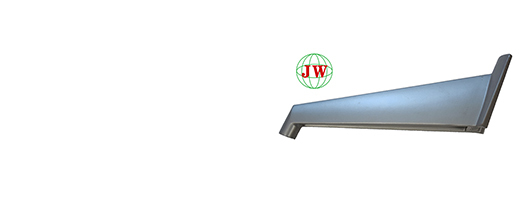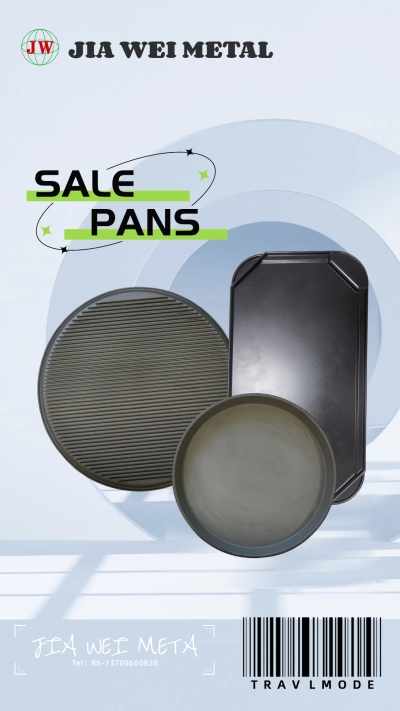
Aluminum Die Castings & Molds: Precision Engineering Fuels EV and Tech Sector Growth
2025-11-26 15:45
SHANGHAI, May 28, 2026 – At a state-of-the-art manufacturing facility in eastern China, a 1650-ton cold-chamber die-casting machine injects molten A356 aluminum alloy into a custom-engineered mold, producing a lightweight EV chassis component in just 68 seconds. The finished part, with a tolerance of ±0.04mm and a weight reduction of 35% compared to steel alternatives, meets the strict performance standards of global automakers. This scene highlights the critical role of aluminum die castings and aluminum die casting moldsin powering high-growth industries, as the global aluminum die casting marketis projected to expand at a CAGR of 4.5% through 2033, driven by soaring demand from electric vehicles (EVs), consumer electronics, and industrial machinery.
Sustainability has become a cornerstone of the aluminum die casting industry, with molds playing a pivotal role in eco-friendly manufacturing. Aluminum’s exceptional recyclability—over 90% of automotive aluminum can be recycled indefinitely without quality loss—aligns with global circular economy goals, reducing carbon footprints by minimizing virgin material usage. Modern mold designs optimize material flow, cutting waste by 28% compared to traditional processes, while advanced vacuum die casting molds reduce energy consumption by 23% by minimizing gas porosity and rework. Major EV manufacturers like BYD and Volkswagen now use 100% recycled aluminum in die cast components, supported by molds engineered for low-temperature casting that further lower emissions by 19%. These innovations help companies comply with stringent regulations such as the EU’s CBAM and China’s “Dual Carbon” policy, enhancing market competitiveness.
Material innovation is elevating the performance of aluminum die castings and the molds that produce them. High-strength alloys like AA6061 and ADC12 offer tensile strength exceeding 330MPa while maintaining excellent castability, making them ideal for EV battery housings and aerospace parts. Korean researchers have developed a new aluminum-silicon-magnesium alloy that improves heat resistance by 45%, enabling its use in EV motor housings operating at temperatures up to 220°C. Molds must keep pace with these durable alloys: H13 tool steel with TiAlN coatings now achieves a service life of over 220,000 cycles, a 45% improvement from uncoated molds. For precision electronics, A380 aluminum alloy delivers superior dimensional stability and thermal conductivity, critical for 5G base station components and laptop heat sinks. Mold manufacturers are also adopting powder metallurgy steel for complex inserts, enhancing wear resistance and reducing maintenance downtime.
The EV sector is the primary growth driver, demanding innovative mold solutions for large, integrated components. Traditional automotive manufacturing relied on dozens of stamped and welded parts, but modern EVs use single-piece aluminum die cast structures—such as Tesla’s “megacast” front underbody—reducing part counts by 65% and assembly time by 55%. These large-format components require massive molds (some weighing over 60 tons) with intricate cooling channels, designed using computational fluid dynamics (CFD) to ensure uniform alloy flow and rapid solidification. Leading mold makers like Haitian and LK Group have developed intelligent mold temperature control systems that adjust cooling rates in real time, eliminating defects like shrinkage and ensuring consistent quality. Beyond chassis and battery components, EV manufacturers use aluminum die castings for inverter casings, charging port brackets, and motor mounts—all requiring molds that balance precision, strength, and production efficiency.
Consumer electronics and industrial machinery are emerging as key secondary markets, pushing mold precision to new heights. The trend toward miniaturization and lightweighting in smartphones, wearables, and IoT devices has created demand for micro-aluminum die cast parts with wall thicknesses as thin as 0.7mm. Molds for these components feature ultra-fine cavities and high-precision ejector systems, achieving surface roughness as low as Ra 0.3μm and eliminating post-processing needs. Industrial applications, such as hydraulic valves and robotic arms, require molds that produce parts with complex internal geometries and tight tolerances, supporting smart manufacturing growth. These advancements translate to tangible benefits: electronics manufacturers report a 32% reduction in component weight and 27% lower production costs, while industrial clients see a 42% improvement in part durability compared to plastic or steel alternatives.
Digitalization and smart technology are transforming aluminum die casting mold design and production. 3D printing (additive manufacturing) revolutionizes mold development, enabling conformal cooling channels that reduce cycle times by 38% and improve part quality. Leading mold makers now use 3D-printed inserts for complex components, cutting development time from months to weeks. IoT sensors integrated into molds monitor temperature, pressure, and wear in real time, transmitting data to cloud platforms for predictive maintenance—reducing unplanned downtime by 31% and extending mold life by 24%. Digital twin technology allows virtual simulation of mold performance, optimizing designs for alloy flow and defect prevention before physical production—slashing development costs by 33%. AI algorithms analyze production data to adjust mold parameters automatically, ensuring consistent quality even for high-volume runs.
Despite strong growth, the industry faces challenges including aluminum price volatility (which fluctuated by 29% in 2025) and a global shortage of skilled mold designers (estimated at 37% in key markets). Supply chain disruptions for specialized mold steels and coatings also pose risks. However, solutions are emerging: long-term aluminum supply contracts stabilize costs, while industry-academia partnerships in China, Germany, and the U.S. train 22,000+ technicians annually in smart mold technology. Hybrid mold designs (combining 3D-printed inserts with traditional steel frames) address cost and lead time concerns, making high-precision molds accessible to mid-sized manufacturers.
Looking ahead to 2033, the aluminum die casting mold sector is poised for sustained growth, driven by EV adoption, smart manufacturing expansion, and global sustainability goals. “Aluminum die casting molds that integrate precision engineering, digital capabilities, and eco-friendly design are essential for manufacturers competing in high-tech markets,” notes a senior analyst at MarketsandMarkets. As alloy technology advances and digital tools become more accessible, aluminum die castings will replace traditional materials in an expanding range of applications. With its unique balance of strength, lightweight, and sustainability, aluminum die casting—powered by innovative molds—is set to shape the future of manufacturing across industries.
Would you like a bilingual glossary of key terms (English-Chinese) for this news, covering core alloy models, mold technologies, and market terminology to support international business communications?
Get the latest price? We'll respond as soon as possible(within 12 hours)












